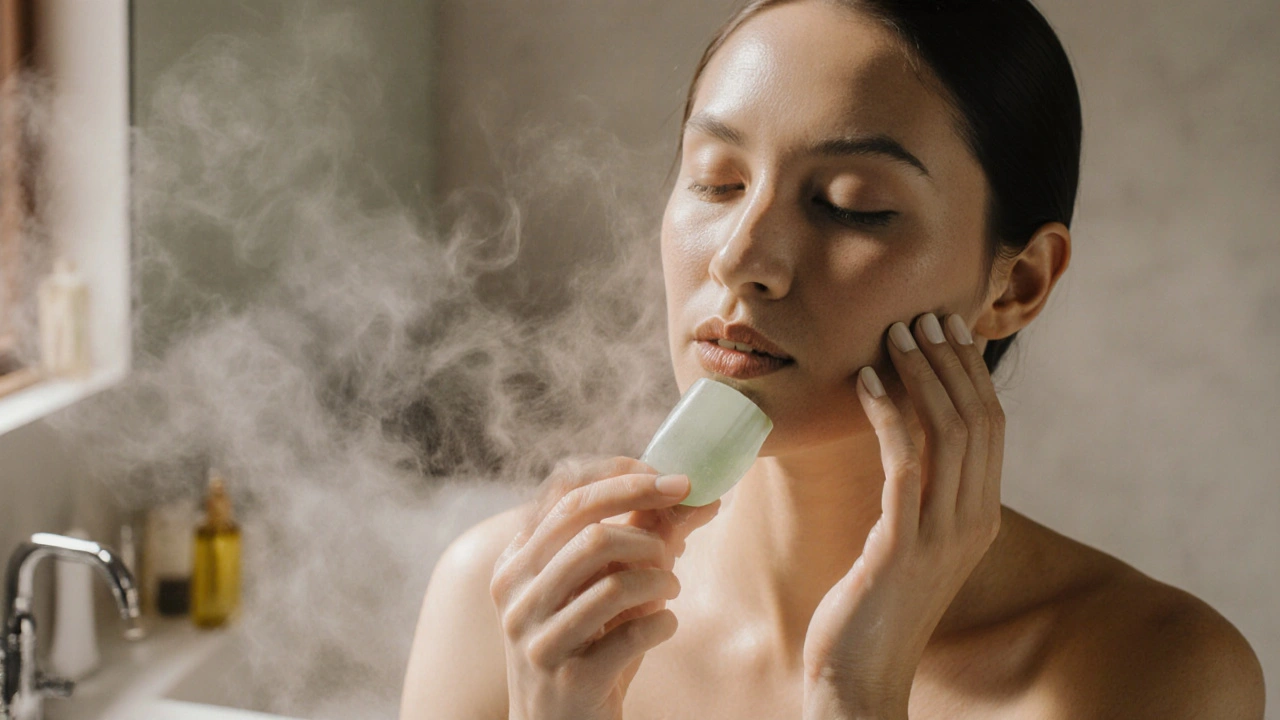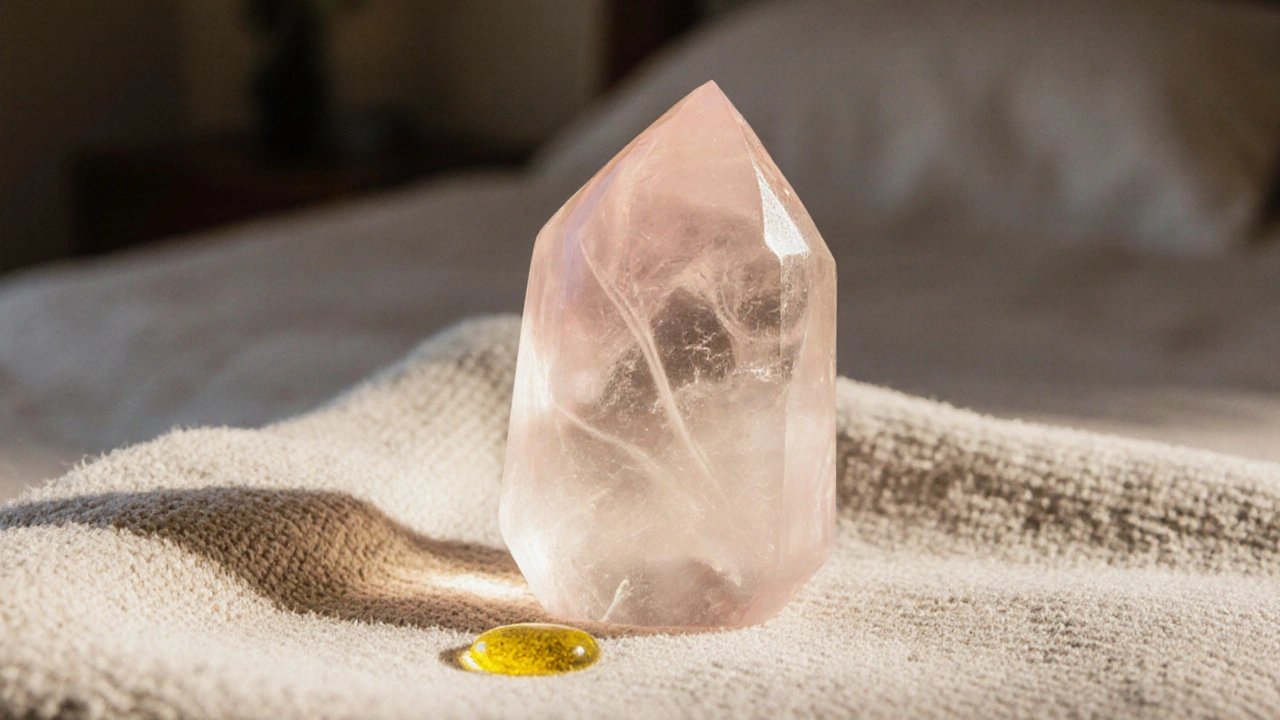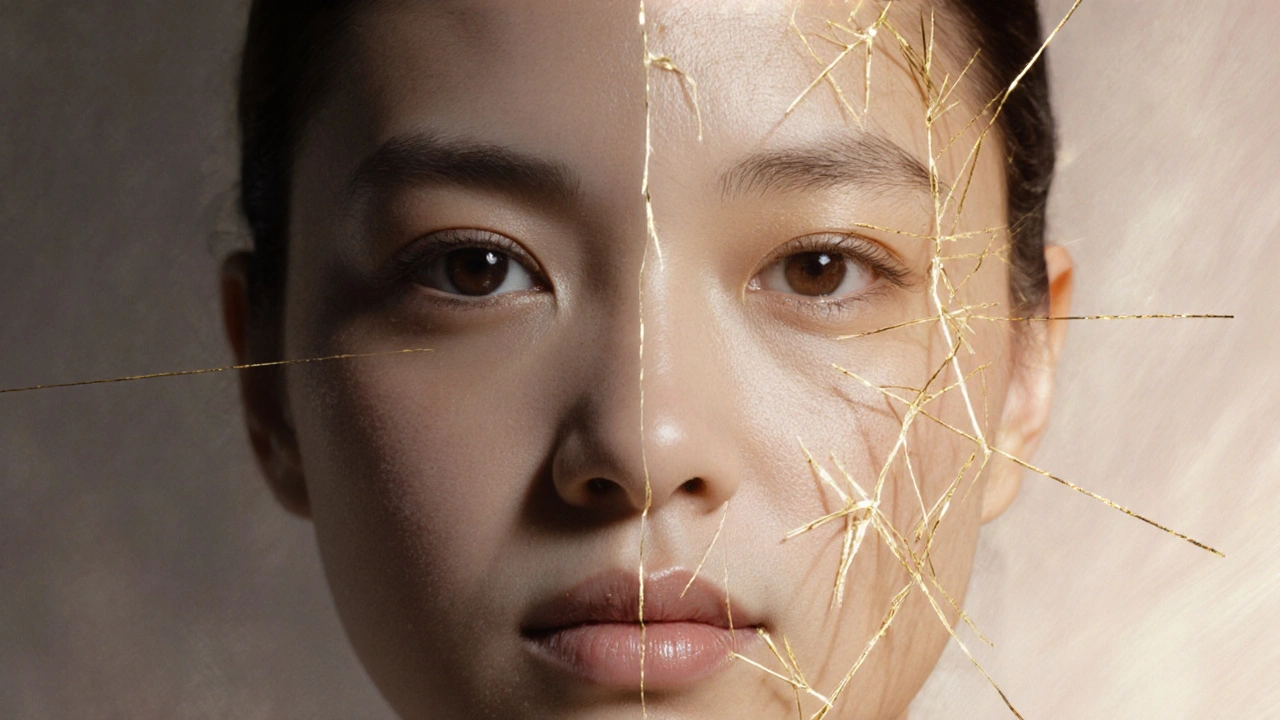Rejuvenate Your Skin with Gua Sha: A Simple Daily Ritual for Glow and Lift
 Nov, 23 2025
Nov, 23 2025
Gua Sha Pressure Guide
Find Your Perfect Pressure Level
Gua sha is most effective when applied with the right amount of pressure. Too light and you won't get results. Too hard and you risk bruising. This tool helps you determine the ideal pressure for your skin type and concerns.
Ever look in the mirror and feel like your face is holding onto tension you didn’t even know you had? That heaviness under your eyes, the dullness that won’t quit, the jawline that seems to blur into your neck - it’s not just aging. It’s stagnation. Your skin isn’t lazy. It’s trapped. And gua sha might be the quiet, ancient tool that finally sets it free.
What Gua Sha Actually Does for Your Skin
Gua sha isn’t magic. It’s mechanics. It’s a 2,000-year-old Chinese technique using a smooth stone - usually jade or rose quartz - to gently scrape the skin in specific patterns. But instead of breaking skin, it lifts it. It doesn’t exfoliate. It doesn’t inject anything. It just moves what’s stuck.
When you press the tool into your face and glide it upward, you’re triggering two things: lymphatic drainage and microcirculation. Your lymph system is your body’s trash hauler. It clears out toxins, excess fluid, and inflammatory byproducts. But when you’re stressed, sleep-deprived, or just sitting too long, that system slows down. Fluid pools under your eyes. Your cheeks swell. Your jawline disappears.
Studies from the Journal of Cosmetic Dermatology in 2021 showed that regular gua sha use increased blood flow to the face by up to 40% within 10 minutes. That means more oxygen, more nutrients, and a natural flush that no highlighter can fake. The result? Brighter skin. Reduced puffiness. A lifted contour that lasts hours - not just while you’re doing it.
Why Your Skincare Routine Is Missing This
You wash. You tone. You apply serums. You lock it in with moisturizer. But if nothing moves, nothing changes. Think of your skin like a garden. You can water it all day, but if the soil is compacted, the roots can’t breathe. Gua sha is the tiller. It breaks up the dense, stagnant layers under your skin so your expensive creams can actually sink in.
Most people skip it because they think it’s complicated. Or scary. Or expensive. But you don’t need a $200 tool or a 30-minute ritual. A $15 stone, 5 minutes a day, and the right technique are all it takes.
Here’s what most guides get wrong: they tell you to press hard. They show you dragging the tool across your forehead like you’re sanding wood. That’s not gua sha. That’s bruising. True gua sha is light. It’s slow. It’s like petting a cat - firm enough to feel, gentle enough to soothe.
How to Do It Right - Step by Step
You don’t need to be a therapist. You don’t need to memorize meridians. Just follow this sequence, once a day, preferably in the morning before makeup or at night after cleansing.
- Start clean and slick. Wash your face. Pat dry. Then apply a drop of facial oil - jojoba, squalane, or rosehip. Don’t use water-based serums. Oil lets the stone glide without tugging.
- Neck first. Hold the tool flat. Start at the base of your neck, just above your collarbone. Gently glide upward toward your jawline. Do this 3 times. This wakes up your lymphatic system.
- Jawline lift. Place the curved edge of the tool along your jaw. Start at your chin and glide toward your ear. Repeat 3 times on each side. This defines your jaw and reduces morning puffiness.
- Cheek lift. Place the tool at the side of your nose. Glide outward and upward toward your temple. Don’t pull sideways. Always move with the natural flow of your skin. 3 times per cheek.
- Under eyes. Use the small tip or edge of the tool. Start at the inner corner of your eye. Glide gently toward your temple. Do this only 2 times. Too much pressure here causes bruising.
- Forehead calm. Start between your eyebrows. Glide outward toward your hairline. Do this 3 times. This helps release tension from frowning or screen stress.
That’s it. Five minutes. No fancy app. No expensive device. Just your hand, a stone, and a little patience.

What You’ll Notice - And When
Some people swear they saw results after one use. That’s usually the puffiness. Your eyes look less swollen. Your cheeks look less puffy. That’s the lymphatic system clearing fluid.
But real change - the glow, the lift, the firmness - takes consistency. Most users report noticeable improvement in skin texture and tone after 2 to 3 weeks. Not because the stone changed their skin. Because they finally moved it.
One woman in Liverpool, 47, started gua sha after her doctor told her her skin looked “tired from stress.” She did it every morning before coffee. After six weeks, she stopped using concealer under her eyes. “I didn’t even realize how dark they’d gotten,” she told me. “Now I just look... rested.”
Choosing the Right Stone
Not all stones are created equal. Jade has been used for centuries. It’s cool to the touch, which helps soothe inflammation. Rose quartz is softer, slightly warmer, and often preferred for its calming energy - though scientifically, it’s no different than jade.
What matters more than the stone is the shape. Look for a tool with:
- A curved edge for the jawline
- A flat side for the forehead and cheeks
- A small tip for under the eyes
- No sharp corners
Avoid cheap plastic or metal tools. They don’t glide. They dig. Stick with natural stone. You can find a good one for under $20. Skip the ones with 12 attachments and LED lights. You don’t need a gadget. You need a tool.

Who Should Avoid Gua Sha
It’s safe for most people. But skip it if you have:
- Active acne with open sores or cysts
- Recent Botox or fillers (wait at least 48 hours)
- Severe rosacea or eczema flare-ups
- Thin, fragile skin from long-term steroid use
If you’re unsure, test it on your forearm first. If your skin turns red and stays red, stop. A little pinkness is normal. Bruising is not.
Make It a Ritual, Not a Chore
Gua sha isn’t a treatment. It’s a pause. A moment where you touch your face with care. In a world that tells you to scrub, exfoliate, and fix, gua sha asks you to just be. To listen. To move slowly.
Do it while you listen to music. Do it after your shower. Do it before you scroll. Make it yours. Not because it’s trendy. Because it works.
Your skin remembers what you do to it - not just what you put on it. And sometimes, the most powerful thing you can do is simply lift it up.
Can gua sha really reduce wrinkles?
Gua sha doesn’t erase wrinkles like a laser or filler. But it can reduce the appearance of fine lines by improving circulation and skin elasticity. When your skin gets more blood flow, it produces more collagen naturally over time. It won’t fix deep lines, but it can soften early signs of aging and make skin look plumper and more resilient.
How often should I use gua sha?
Once a day is enough for most people. Morning use helps reduce puffiness and prep skin for makeup. Night use helps release tension and supports overnight repair. If you’re new, start with 3-4 times a week. Your skin will tell you when it’s ready for daily use.
Do I need facial oil for gua sha?
Yes. Without oil, the stone will drag and pull your skin, which can cause micro-tears or irritation. Use a lightweight facial oil - jojoba, squalane, or grapeseed work well. A single drop is enough. Don’t use heavy creams or water-based serums. They don’t provide the glide you need.
Can I use gua sha if I have sensitive skin?
Yes - if you’re gentle. Use less pressure and shorter strokes. Stick to jade, which is naturally cooling and calming. Avoid using it during active breakouts or sunburn. If your skin stings or turns bright red, stop. Sensitive skin responds better to slow, consistent pressure than aggressive motion.
Is gua sha the same as a facial roller?
No. Rollers are great for cooling and light lymphatic stimulation, but they can’t contour or lift like gua sha. The flat edge and curves of a gua sha tool allow you to target specific areas - like the jawline or under-eye hollows - with precision. Rollers are passive. Gua sha is active. One glides. The other lifts.
If you’ve tried every serum, mask, and gadget and still feel like your skin is stuck - give gua sha a real shot. Not as a miracle cure. But as a quiet, daily act of care. Your skin isn’t broken. It just needs to be moved.
